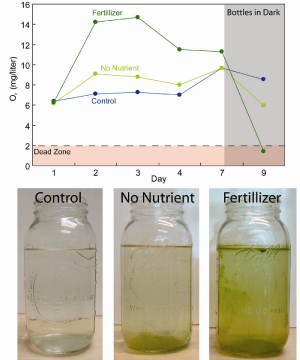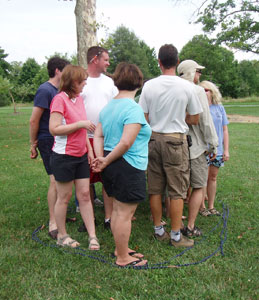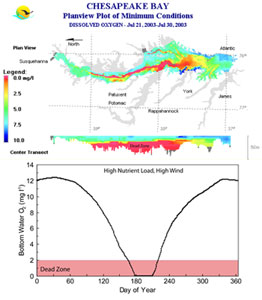
The following set of classroom activities were created by William Gray, a MD high school science teacher with the assistance of his scientist educator team, including a research scientist, a graduate student, and an undergraduate student. The activities follow the 5-E format (Engagement, Exploration, Explanation, Extension, Evaluation) and also match the content presented in the pages of this Dead Zone Module. The activities include instructor directions as well as downloadable student worksheet  ts and other resources.
ts and other resources.
What is the “Dead Zone”?
How does a dead zone form in Chesapeake Bay?
Activity: Density driven currents
What are the effects of hypoxia?
Dead Zone Trends
What are the challenges for future dead zone research?
Additional Resources
![]() Science Presentation: Dead Zones and Coastal Eutrophication: Case Study of Chesapeake Bay, Dr. Michael Kemp, University of Maryland; discusses the causes and consequences of dead zones.
Science Presentation: Dead Zones and Coastal Eutrophication: Case Study of Chesapeake Bay, Dr. Michael Kemp, University of Maryland; discusses the causes and consequences of dead zones.
United States Geological Survey Hypoxia Summary: Additional information about dead zones, with a focus on the Mississippi River watershed and the Gulf of Mexico.
Gulf of Mexico Hypoxia Watch: Monitoring network for the Gulf of Mexico dead zone.
Lake Erie Dead Zone: EPA website focusing on the dead zone in the US Great Lake, Lake Erie.
NOAA's Coastal Hypoxia Research Program (CHRP)






